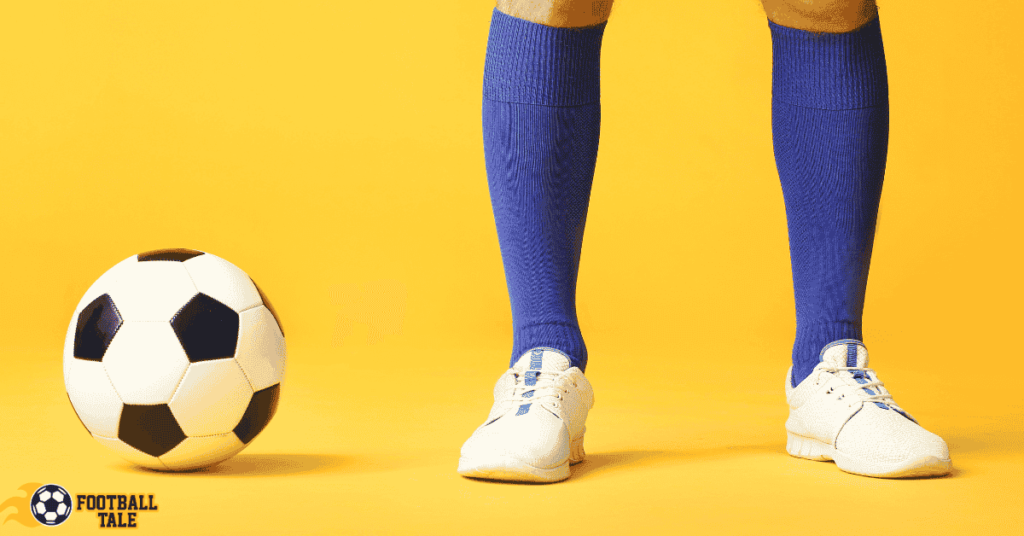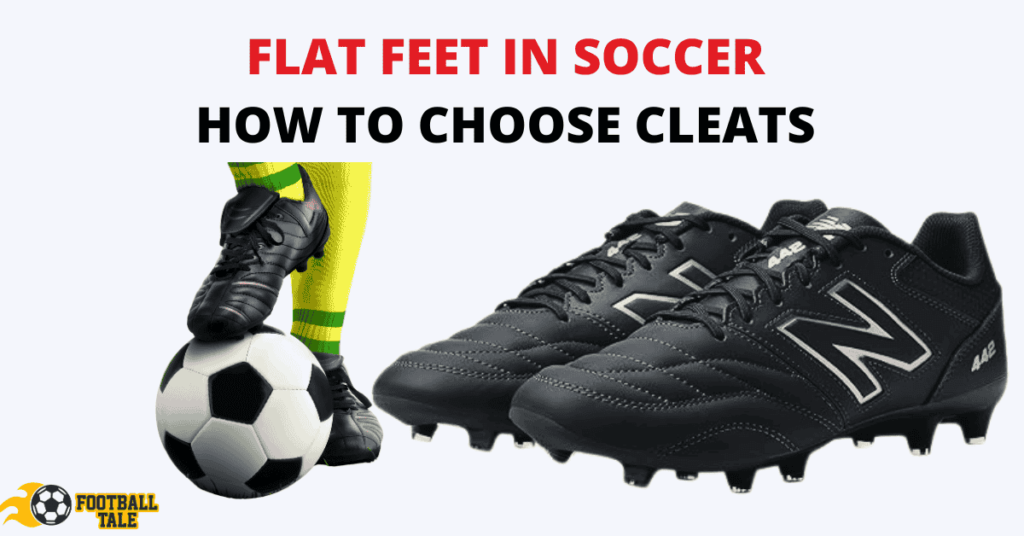Hello Soccer Fans! Anybody with a love for the game will know how invaluable it is to find the perfect soccer cleats and especially if you have flat feet, comfort and performance are going to be your biggest priorities.
For athletes, having flat feet and playing soccer can be a tricky pair. That absence of an arch can bring about discomfort, instability and even place you at greater odds for injury. Thus, players with flatfoot need to invest in the right pair of soccer cleats for flat feet that can provide players with proper support and comfort which also helps on field performance.
Understanding Flat Feet and Soccer Performance
Flat feet, or pes planus, occur when the arches of the feet collapse, causing the entire sole to touch the ground. For soccer players, this can lead to:

- Overpronation: Excessive inward rolling of the foot during movement.
- Poor Shock Absorption: Increased stress on ankles, knees, and hips.
- Fatigue and Pain: Strain on ligaments (e.g., plantar fasciitis) and muscles.
Soccer demands explosive sprints, quick pivots, and constant lateral movement. Without proper arch support, flat-footed players risk injuries like shin splints, Achilles tendonitis, and chronic joint pain.
The more comfortable your cleats, the better you will be able to operate, and the more enjoyable of a game you will have.
How Flat Feet Affect Your Game
- Stability Issues: Collapsed arches reduce balance during tackles or direction changes.
- Reduced Power Transfer: Weak arch structure limits energy efficiency in kicks.
- Long-Term Damage: Repetitive stress on misaligned joints can lead to arthritis or stress fractures.
Did You Know?
Studies show that 15–25% of adults have flat feet, but many soccer players adapt successfully with the right footwear and training.
Anatomy of a Soccer Cleat: What Flat-Footed Players Need
1. Arch Support Technology
- Purpose: Counteracts overpronation and aligns the foot’s natural posture.
- Look For: Built-in orthotic compatibility or molded midsoles with medial (inner) arch reinforcement.
2. Cushioning Systems
- Why It Matters: Absorbs impact during jumps, sprints, and landings.
- Materials: EVA foam, gel pads, or polyurethane midsoles for long-lasting comfort.
3. Wide Toe Boxes
- Benefit: Prevents toe crowding and blisters, common in flat feet due to splaying.
4. Flexible Outsoles
- Key Feature: Allows natural foot flexion while maintaining traction on grass, turf, or indoor surfaces.
5. Heel Counters
- Role: Stabilizes the heel to prevent excessive inward rolling (overpronation).
Types of Soccer Cleats for Flat Feet
- Motion Control Cleats
- Best For: Severe overpronators.
- Design: Rigid midsoles and reinforced arches.
- Stability Cleats
- Best For: Moderate overpronation.
- Design: Balanced cushioning and arch support.
- Neutral Cleats with Custom Insoles
- Best For: Mild flat feet.
- Design: Removable insoles to accommodate orthotics.
Recommendations: Top Soccer Cleats for Flat Feet
✔ All-round performance
✔ Full-grain leather
✔ Wide-foot friendly
✔ Elite Performance
✔ Premium K-leather
✔ Barefoot feel
✔ Premium comfort
✔ German-crafted K-leather
✔ Classic design
If you’re interested in the best soccer cleats for wide feet or top flat feet cleats on some of the best brands like Nike, Adidas or Puma, please check out our expertly curated Soccer Equipment Buying Guide and Soccer Insights to enrich your soccer knowledge and build your ultimate kit.
How to Choose the Right Flat Feet Cleats: A Step-by-Step Guide
- Step 1: Know Your Foot Type
- Perform the “Wet Test”: Wet your feet and step on paper. Flat feet leave a complete imprint.
- Step 2: Prioritize Fit Over Style
- Rule of Thumb: Leave a thumb’s width of space at the toe for natural movement.
- Step 3: Test on the Field
- Mimic soccer movements (lunges, pivots) to check for heel slippage or pressure points.
- Step 4: Pair with Orthotics (If Needed)
- Consult a podiatrist for custom insoles that match your cleat’s design.
Foot Care Tips for Flat-Footed Soccer Players
- Strengthen Your Feet
- Exercises: Toe curls, arch lifts, and resistance band workouts.
- Benefit: Builds intrinsic foot muscles to support arches.
- Stretch Daily
- Focus On: Calf stretches, plantar fascia rolls (use a tennis ball), and Achilles tendon stretches.
- Rotate Cleats
- Why: Alternating between pairs reduces repetitive stress on pressure points.
Common Mistakes to Avoid as a Flat-Footed Player
❌ Ignoring Pain: Discomfort during play is a red flag—reevaluate your cleats.
❌ Choosing Style Over Support: Flashy designs often lack structural integrity for flat feet.
❌ Skipping Break-In Time: Even supportive cleats need gradual adaptation.
FAQs
Q: Can I use regular soccer cleats if I have flat feet?
A: It’s risky. Regular cleats lack the arch support and stability features needed to prevent injuries.
Q: How often should I replace my cleats?
A: Every 6–12 months, depending on usage. Worn-out soles lose traction and support.
Q: Are there specific brands for flat-footed players?
A: Brands like Nike, Adidas, and New Balance offer cleat lines with wider fits and enhanced support.
Q: What are the best soccer shoes for flat feet?
A: The Adidas Copa Mundial, Nike Tiempo Legend, Nike Premier III, New Balance 442 V2 Pro, and Puma King are popular choices, but ultimately the best shoe for you depends on your individual foot and playing style.
Q: How should soccer cleats fit?
A: Cleats should fit snugly but not be too tight. You should be able to wiggle your toes comfortably. There should be minimal heel slippage.
Q: Do soccer cleats have arch support?
A: Some cleats do offer built-in arch support, while others have removable insoles that can be replaced with custom orthotics.
Q: Can I still play soccer with flat feet?
A: Absolutely! Many professional soccer players have flat feet. The key is finding the right support and footwear.
Conclusion: Prioritize Health, Elevate Performance
Flat feet don’t have to limit your soccer journey. By understanding your biomechanics and choosing cleats that prioritize arch support, cushioning, and stability, you can play pain-free and unlock your full potential.
Foot health is career health. Pair your cleats with strength training and regular check-ups to stay at the top of your game.





